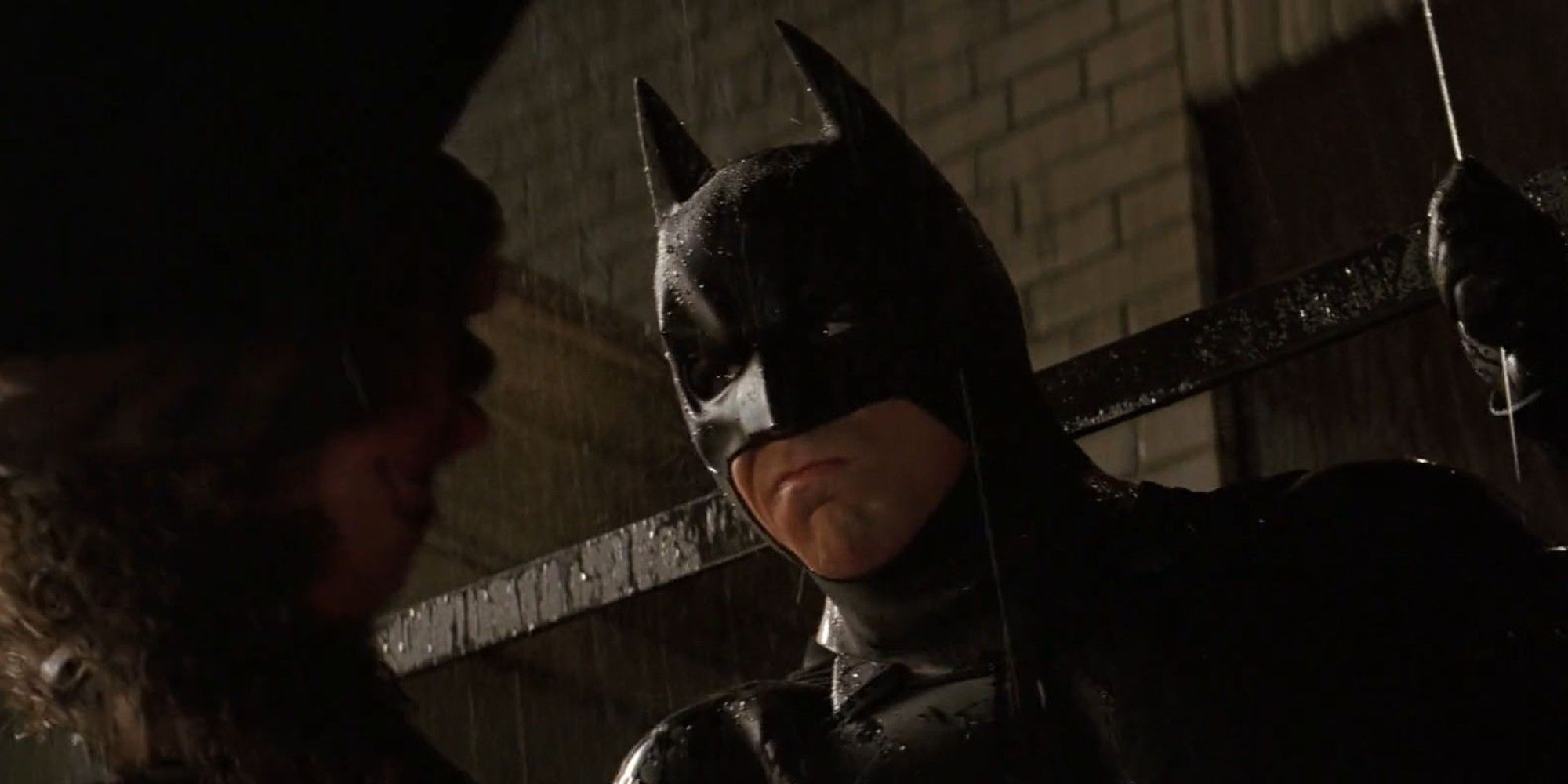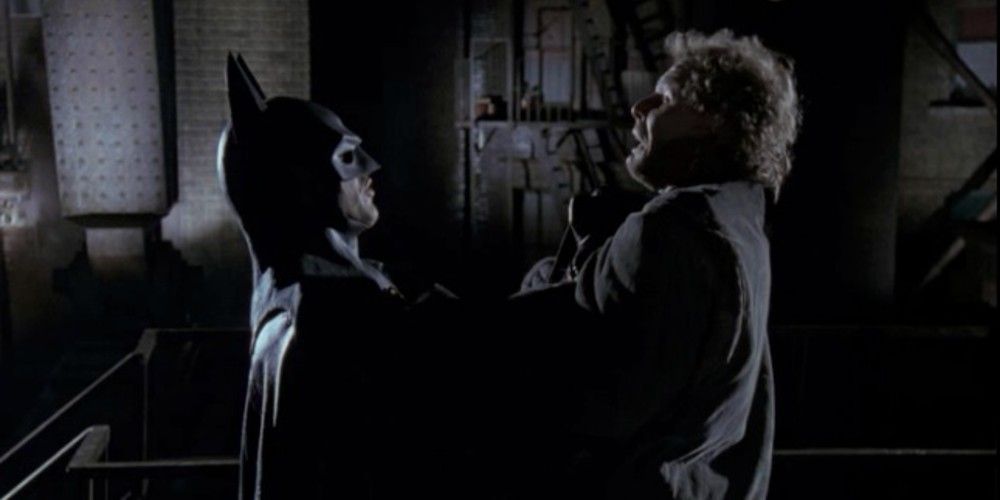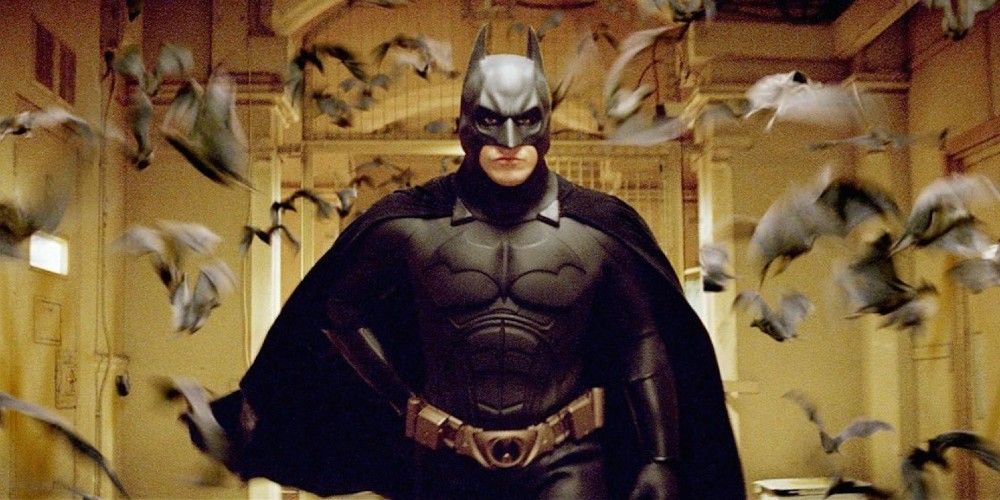Batman’s voice is only one way that Bruce Wayne disguises himself as the Caped Crusader. More than any other Superhero, Batman’s voice-alteration has become a distinct characteristic. The low baritone rasp is commanding, intimidating and wholly separate from the voice of Bruce Wayne. However, like many aspects of Batman’s arsenal, this was not always the case.
Early comics’ narration captions describe Batman’s voice as “calm” and “masterful,” implying a firm, authoritative cadence. It was never explicitly stated that Batman changed his voice to intimidate criminals. In the 1960s Batman TV, Adam West employed this calm but firm voice. The episode “Ice Spy” had West enact a telephone conversation with himself: speaking as both Bruce Wayne and Batman. West doesn’t exactly change his voice, but he does use a lighter tone for Bruce Wayne and a more hurried one for Batman.
As comics became grittier in the ‘70s and ‘80s, Batman’s voice hardened along with them. The Untold Legend of the Batman described it as “cold as the Antarctic wind,” while others described it as “kind of whispery.” Michael Keaton utilized this more menacing tone in 1989’s Batman, speaking in a hushed and steely voice. Keaton explained in an interview he thought it was necessary for batman to disguise his voice, saying “people know his voice. So I came up with dropping his voice down, as Batman it comes from a lower thing that he drops down into, a place he has to reach to become a quasi-vigilante.”
Keaton’s Bat-voice was developed for the sake of disguise and psychological transformation. Val Kilmer would use a similar technique in Batman Forever (1995), although it was less whispery. George Clooney spoke normally in Batman & Robin (1997) regardless of identity. Meanwhile, in Batman: The Animated Series (1992-1995), Kevin Conroy voiced Batman as clear and deep, while his Bruce Wayne was subtly lighter and preppy.
Batman’s voice only got rougher over time in the comics, which Christian Bale represented with his overtly guttural and bestial affectation in Batman Begins (2005). As with Keaton, Bale believed the voice helped determine the character. When asked about the voice, director Christopher Nolan said, “you had to project massive energy through this costume in order to not question the costume.” This Batman was more aggressive and bestial, the raspy voice used to growl at intimidated criminals. Somewhat divisively, Bale made the Bat-voice even raspier in The Dark Knight (2008), which was amplified by post-production alteration.
Originally, such voice-alteration was meant to be diegetic. The production notes for Batman Begins indicate that Batman’s voice was distorted by speakers in the Bat-suit. This is what Oliver Queen (Stephen Amell) used in the early seasons of Arrow, which were heavily inspired by Nolan’s Batman films, as well as in the audibly “autotuned” cadence of Ben Affleck's portrayal in Batman v. Superman (2016). However, such explanations were cut from Batman Begins, although eagle-eyed viewers can still spot the tiny speakers on the lapels of Bale’s Bat-suit. It’s also worth noting that whenever Batman visits Commissioner Gordon outside of his costume – at the police precinct in Batman Begins or at the hospital in The Dark Knight Rises (2012) – Bale employs a soft whisper instead of his usual raspy growl.
Batman's voice has certainly evolved over the years. Time will tell how Robert Pattinson addresses the Bat-voice when he portrays the character in The Batman.



